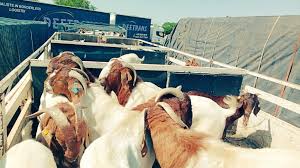Goat mortality on the decline
THE country’s goat mortality dropped to 9% last year compared to 13,5% recorded in the prior year, statistics from the Crops, Livestock and Fisheries assessment report have revealed.
According to the report, the majority of the recorded goat deaths were due to diseases.
“Goat mortality of 9% was recorded in 2022 compared to 13,5% in 2021. Major causes of goat mortality in 2022 were diseases accounting for 58% of goat deaths. Kid mortality accounted for the bulk of goat deaths recording 72% of total goat deaths,” the report stated.
Currently, there are calls from stakeholders for sustainable solutions to goat mortality because the sector offers immense export market opportunities.
Mortality in sheep, which was also attributed to diseases, decreased to 6% last year from 10% in 2021.
“Highest sheep deaths were as a result of diseases and accounted for 61% of total mortality followed by predators which accounted for 25% of total mortality. Highest mortality was recorded in lambs which accounted for 69% of total sheep mortality,” the report said.
Experts believe that goats and sheep withstand drought conditions much better than cattle and they can survive on shrubs and need less manpower to tend to, making them a better choice to cattle, which are less tolerant to drought conditions.
While most households keep goats and sheep as domestic livestock for their own consumption, there is vast potential to increase herds for export, given the animals’ rearing advantages and growing global demand for their meat.
Figures available on Trade Map show that the global trade in goat and sheep meat has been growing over the past five years, from US$6,99 billion in 2017 to US$8,61 billion in 2021.
Currently, the largest importers of goat and sheep meat are China (US$2,38 billion), United States (US$1,44 billion), France (US$893 million), United Kingdom (US$368 million), Germany (US$323 million) and United Arab Emirates (US$322 million).-newsday











